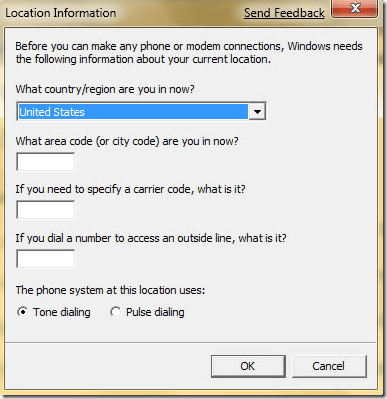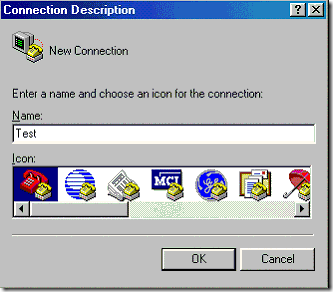If you’ve recently upgraded to Windows 7 and are wondering what happened to HyperTerminal, you’re not alone! HyperTerminal was a sweet little program that let you connect to other computers, Telnet sites, host computers, BBSs, etc using your modem or Ethernet connection.
In Windows 7 and Vista, you will no longer find the HyperTer minal program. If you need HyperTerminal to control serial devices, there is a way to get it back! Also, there are several new alternatives to HyperTerminal that are probably better for secure shell access and troubleshooting modems.

It’s basically a SSH replacement that allows remote command line access over an encrypted connection. It also uses the SOAP protocol.

All you have to do is provide information about the Country/Region, Area Code, Carrier Code, and Outside Dial Number to access the dialog box. Once you do that, you can troubleshoot your modem in Windows 7 or Vista.
HyperTerminal Private Edition – This is a commercial terminal emulation program that you can use to communicate with serial COM ports, dial-up modems, and TCP/IP networks.
TeraTerm – TeraTerm is an open-source terminal emulator and SSH module that supports IPv6, SSH1, SSH2, Telnet, serial ports, and file transfer protocols (XMODEM, Kermit, ZMODEM, B-PLUS, etc).
Putty – Another free Telnet and SSH implementation for Windows. It also is an xterm terminal emulator. This is probably my favorite alternative to HyperTerminal.
The two files you will need are hypertrm.dll and hypertrm.exe. Simply copy those files into any directory on your machine and it will work. You should be able to find hypertrm.exe in C:\Program Files\Windows NT and hypertrm.dll in C:\Windows\System32.
If you have the Windows XP CD, you should be able to find both of these files in the i386 directory on the CD.

So that’s about it! Even though HyperTerminal is no longer in Windows 7, it’s really not needed since you have a lot of great alternatives like Putty, etc. If you want it simply because you’ve been using it for a long time, either download the Private Edition or copy the files from XP. Enjoy!
In Windows 7 and Vista, you will no longer find the HyperTer minal program. If you need HyperTerminal to control serial devices, there is a way to get it back! Also, there are several new alternatives to HyperTerminal that are probably better for secure shell access and troubleshooting modems.
Windows Remote Shell
Firstly, if you only need remote shell access, you can use the new Windows Remote Shell command line option in Windows 7 and Vista. To learn more about using WRS, simply open a command prompt and type in winrs /?.
It’s basically a SSH replacement that allows remote command line access over an encrypted connection. It also uses the SOAP protocol.
Phone and Modem Options
If you were using HyperTerminal to troubleshoot modems, you can now use Phone and Modem Options to do this. Go to Control Panel, click on Hardware and Sounds and then click on Phone and Modem Options.
All you have to do is provide information about the Country/Region, Area Code, Carrier Code, and Outside Dial Number to access the dialog box. Once you do that, you can troubleshoot your modem in Windows 7 or Vista.
HyperTerminal Alternatives
If you don’t want to use all these alternative methods, you can still use alternative programs for HyperTerminal. Here are some of my favorites.HyperTerminal Private Edition – This is a commercial terminal emulation program that you can use to communicate with serial COM ports, dial-up modems, and TCP/IP networks.
TeraTerm – TeraTerm is an open-source terminal emulator and SSH module that supports IPv6, SSH1, SSH2, Telnet, serial ports, and file transfer protocols (XMODEM, Kermit, ZMODEM, B-PLUS, etc).
Putty – Another free Telnet and SSH implementation for Windows. It also is an xterm terminal emulator. This is probably my favorite alternative to HyperTerminal.
Original XP HyperTerminal
If you just can’t live without the original HyperTerminal in Windows XP, you can actually extract two files from your XP installation and copy them over to Windows 7 or Vista.The two files you will need are hypertrm.dll and hypertrm.exe. Simply copy those files into any directory on your machine and it will work. You should be able to find hypertrm.exe in C:\Program Files\Windows NT and hypertrm.dll in C:\Windows\System32.
If you have the Windows XP CD, you should be able to find both of these files in the i386 directory on the CD.

So that’s about it! Even though HyperTerminal is no longer in Windows 7, it’s really not needed since you have a lot of great alternatives like Putty, etc. If you want it simply because you’ve been using it for a long time, either download the Private Edition or copy the files from XP. Enjoy!